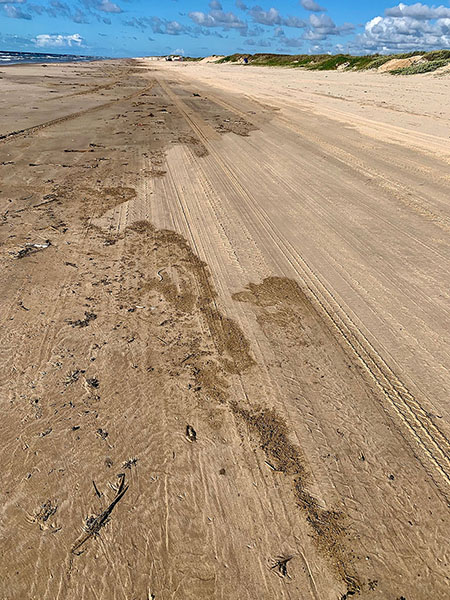 by John Jefferson
by John Jefferson
In mid-September, the column entitled, “A September Song,” spoke of the fine fall saltwater fishing along the coast. The next week, I wrote about the drought’s effects on the popular Central Texas streams.
What started as good news for costal anglers turned bad for inland anglers. But maybe I spoke too soon.
The Texas coast is now affected by an outbreak of the infamous “Red Tide.” Fish kills are already being reported. This is written during the early stages of it. It’s not causing problems like previous Red Tides, yet, but it bears watching.
To begin with, what IS red tide?
Well, it’s not the Gulf’s water magically turning red in the surf or a feeding frenzy by a school of large sharks. But it IS an algae that gives the water a rust-colored look. Its only effect on humans seems to be a burning sensation in their eyes or irritation of their throats and noses leading to coughing, wheezing, or shortness of breath. Asthma-affected folks might have a rougher time of it. If getting close to the water means breathing anything that interferes with inhaling, I’d rather postpone beachcombing for a while. No fatalities have been reported.
Fish don’t have it so lucky, however. It affects their central nervous system, making them unable to breathe. Reports of fish washing up on the shore have already come in from San Lus Pass, Surfside Beach, and the Quintana/Freeport Channel. Sabine Lake and Galveston Bay had moderate red tide densities according to the TPWD Red Tide webpage: www.tpwd.texas.gov/redtide. So far, no fish kills were reported there.
Matagorda Bay and San Antonio Bay reported dead menhaden. Another fish kill comprised of red drum, flounder, spotted seatrout, sharks, and other species was reported at Sargent near Mitchell’s Cut. The webpage referred to above will have more recent information.
Red Tide has appeared before on our coast, the last time in 2018, according to TPWD. That episode took place on the upper and middle coast. The current problem has so far also hit more of the upper coast currently. From reports I have seen, there doesn’t seem to be a problem in the South Padre Island area.
Water samples detected very low concentrations of red tide at Port O’Connor. Samples did not detect red tide near the inlet of Matagorda Ship Channel, Palacios shoreline, Pass Cavallo, Espiritu Santo, the Coastal Bend (Aransas Bay, Corpus Christi Bay) or the upper or lower Laguna Madre.
The Freeport area reported scattered dead fish at Quintana Beach. I spoke with Bryan Frazier, Director of the Brazoria County Park Department who took the attached image of red tide having washed up on the beach near Freeport. He indicated that the red tide algae bloom was a low concentration. His latest report says it has moved away from Brazoria County.
Until it clears, finfish from red tide waters are edible if filleted before cooking. Breathing problems can be treated with over-the-counter antihistamines.
JJ




